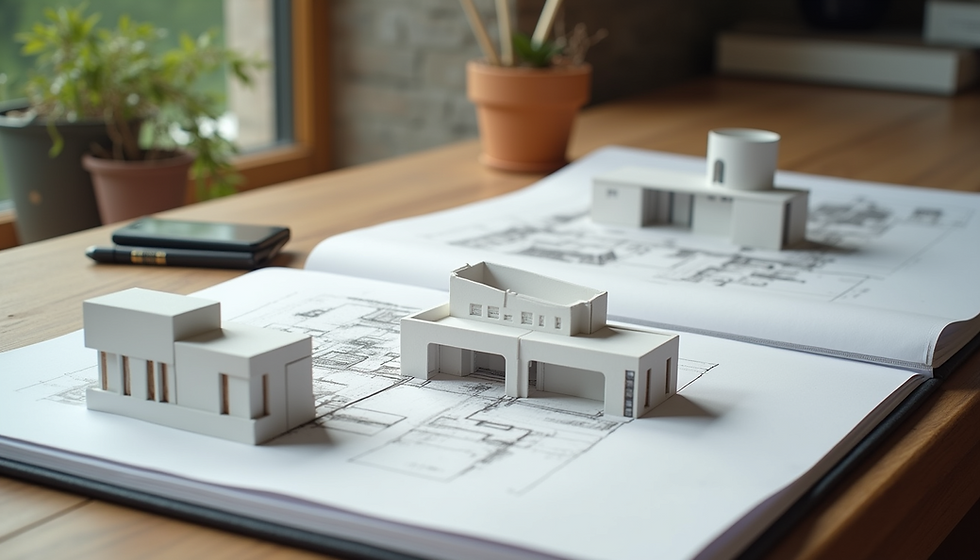Connecting Architects Through Collaborative Design Platforms
- Nov 4
- 4 min read
In today’s fast-paced architectural world, collaboration is more important than ever. Architects no longer work in isolation; they rely on digital tools to share ideas, coordinate projects, and innovate together. Collaborative design platforms have emerged as essential hubs where architects connect, communicate, and co-create. These platforms streamline workflows, enhance creativity, and foster a sense of community among professionals worldwide.
The Rise of Collaborative Design Platforms in Architecture
Collaborative design platforms are software solutions that enable multiple architects and stakeholders to work on the same project simultaneously. These platforms offer cloud-based environments where users can upload, edit, and review architectural plans in real time. This shift from traditional, siloed workflows to integrated digital collaboration has transformed how architectural projects are managed.
Some key features of these platforms include:
Real-time editing and updates: Multiple users can make changes simultaneously, reducing delays.
Version control: Track changes and revert to previous versions if needed.
Centralized communication: Chat, comments, and notifications keep everyone on the same page.
Integration with design software: Seamless connection with tools like AutoCAD, Revit, and SketchUp.
Access from anywhere: Cloud storage allows architects to work remotely or on-site.
For example, a team designing a new urban complex can use a collaborative platform to share 3D models, discuss design options, and finalize plans without the need for constant in-person meetings. This flexibility accelerates decision-making and improves project outcomes.

How Design Platforms Enhance Architectural Collaboration
Design platforms do more than just connect architects; they enhance the quality and efficiency of collaboration. Here’s how:
Improved Communication
Clear communication is vital in architecture, where misunderstandings can lead to costly errors. Collaborative platforms provide tools like instant messaging, video calls, and annotation features that allow architects to discuss ideas directly on the design files. This reduces the risk of misinterpretation and keeps the project moving forward smoothly.
Streamlined Workflow
By centralizing all project data, design platforms eliminate the need to juggle multiple files and emails. Architects can access the latest drawings, specifications, and feedback in one place. This organization saves time and reduces the chance of working on outdated information.
Enhanced Creativity
When architects collaborate in real time, they can brainstorm and iterate designs faster. The ability to instantly see changes and provide feedback encourages experimentation and innovation. Collaborative platforms also support integration with visualization tools, enabling teams to create immersive 3D walkthroughs and virtual reality experiences.
Case Study: Collaborative Urban Design
Consider a project where architects from different countries are designing a sustainable urban neighborhood. Using a collaborative platform, they share environmental data, zoning regulations, and community feedback. The platform’s mapping and simulation tools help them optimize building placement for sunlight and wind flow. This integrated approach results in a design that is both functional and environmentally responsible.

Best Practices for Using Collaborative Design Platforms
To maximize the benefits of collaborative design platforms, architects should follow these practical recommendations:
Choose the Right Platform
Evaluate platforms based on project needs, compatibility with existing software, and user-friendliness. Popular options include BIM 360, ArchiCAD, and Vectorworks Cloud.
Establish Clear Roles and Responsibilities
Define who is responsible for each aspect of the project to avoid confusion and duplication of work.
Maintain Consistent File Naming and Organization
Use standardized naming conventions and folder structures to keep files easy to find and manage.
Schedule Regular Check-ins
Use the platform’s communication tools to hold virtual meetings and review progress frequently.
Train Team Members
Ensure everyone is comfortable with the platform’s features through training sessions and tutorials.
Leverage Community Forums
Engage with other architects on forums like archasm to share tips, solve problems, and stay updated on industry trends.
The Future of Architectural Collaboration
As technology evolves, collaborative design platforms will become even more powerful. Emerging trends include:
Artificial Intelligence (AI): AI can assist in generating design options, detecting errors, and optimizing building performance.
Augmented Reality (AR) and Virtual Reality (VR): These technologies will allow architects and clients to experience designs in immersive environments before construction begins.
Blockchain for Project Management: Secure, transparent record-keeping can improve trust and accountability among project stakeholders.
Increased Integration: Platforms will connect more seamlessly with construction management, cost estimation, and facility management tools.
These advancements will further break down barriers between architects, engineers, contractors, and clients, creating a truly collaborative ecosystem.
Embracing Collaborative Design Platforms for Better Architecture
The architectural profession is at a crossroads where traditional methods meet digital innovation. Collaborative design platforms offer a pathway to more efficient, creative, and connected workflows. By adopting these tools, architects can enhance their ability to deliver high-quality projects on time and within budget.
Whether working on a small residential building or a large urban development, the power of collaboration cannot be overstated. Platforms that enable real-time communication, centralized data management, and integrated design processes are essential for success in the modern architectural landscape.
Embracing these platforms also means joining a global community of professionals who share knowledge and push the boundaries of design. For those looking to expand their network and learn from peers, engaging with communities like archasm can provide valuable insights and support.
In the end, collaborative design platforms are not just tools - they are catalysts for innovation and connection in architecture. The future belongs to those who design together.



Comments